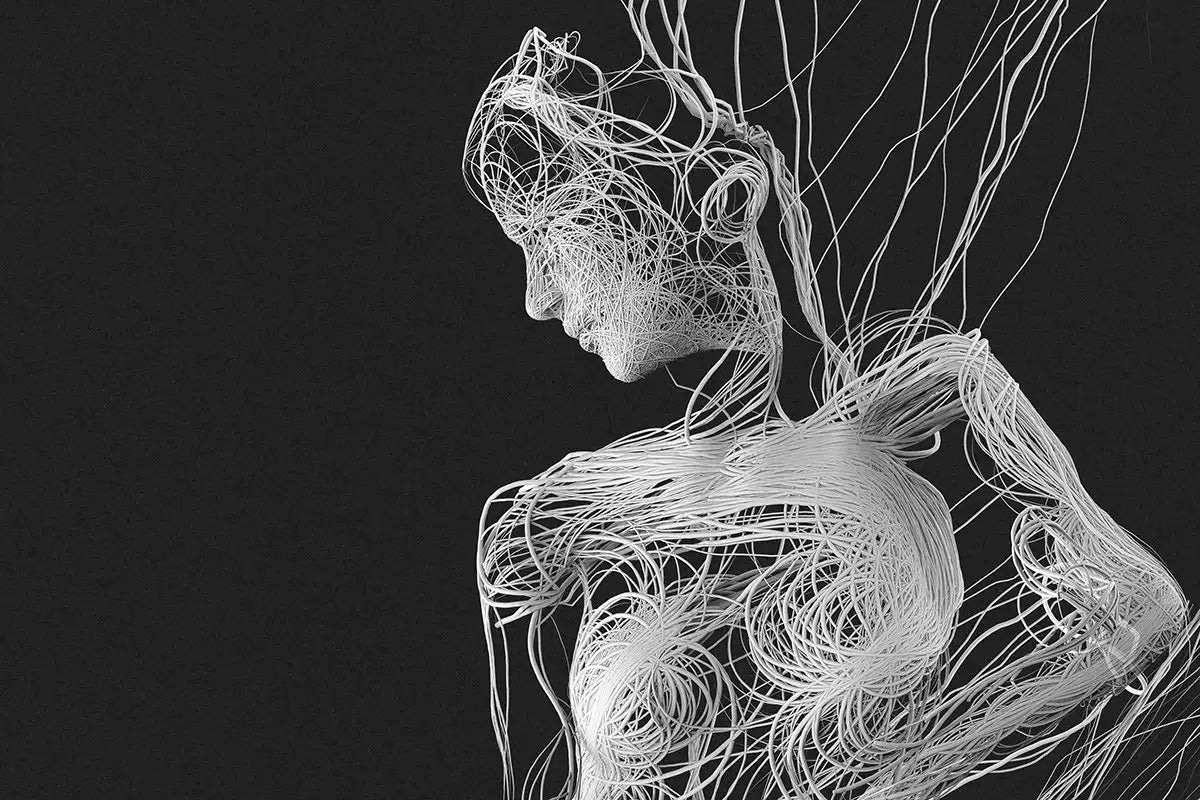The Components of Fascia

Now that you know you have this thing in your body called fascia, what is it made out of? Like many parts of your biology, your fascia has a specific recipe. The body recipe for fascia is collagen, elastin, and ground substance.
Collagen
Collagens are the most common body proteins providing a whopping 30%. They are our primary substance- even our bones originally developed from collagen fibers. In the womb, the embryo initially produces collagen. There are 28 different types of collagen, 4 of which are the most common. Collagen has interesting mechanical features, and the fibers are easily extensible, yet tear-resistant. Their tensile strength can be greater than that of steel! What?! Yep.
Elastin
Elastin is the second most common structural protein found in fascia tissue. It can stretch more than collagen and still return to its original shape. Under tension, it can expand to more than 150% of its original length before it would overload and tear. This extensible ability is super important for our organs which are often required to change their shape.
The Ground Substance
The Ground Substance is a liquid substance in the extra-cellular space of your body, or in other words, a cocktail created by connective tissue cells (fibroblasts) containing enzymes, lymphocytes, immune cells, and various other viscous substances. This cocktail that the other substances float in is called the matrix.
Connective Tissue Cells:
Cool word: Fibroblast! Say it 10 times. See? It’s cool and sounds really scienc-y. Fibroblasts are cells produced by connective tissue that creates collagen and elastin proteins. Fibroblasts produce the fibers of connective tissue for organs, muscles, and bones. They respond to external stresses and change their production according to the body’s special requirements.
Connective tissue cells regularly replace the fabric of fascia. Over the course of a year, about half of the fascial tissue in your body is replaced. A note of interest is that connective tissue cells also produce enzymes and messenger substances that fibroblasts interact with, which influences the body’s immune system.
Once you get involved in the body’s immune system, you’re talking about life and death as well as systemic involvement, and one might propose that fascia is elemental to our very existence! But more on this later.
The Matrix:
The matrix plays a crucial role in the nutrient supply of connective tissue and the organ to which the tissue belongs. The matrix in these different connective tissue types hosts large quantities of immune cells, lymphocytes, fat cells, nerve endings, and blood vessels. The water content of the matrix varies. Water is a crucial medium for cellular metabolism.
Another important component of the matrix is hyaluronic acid, or HA. HA, chemically speaking, is a polymer of sugar molecules and is produced by the connective tissue cells, but you might know it best as a staple in your beauty products. Its superhero skill is its ability to carry huge amounts of water between the collagen and elastin fibers in the skin, creating a plump, wrinkle-free complexion. Hence its celebrity status amongst cosmetic companies and plastic surgeons in products and injectables.
From a functional perspective, HA plays an important role in the liquid content of loose types of connective tissue. It is vicious, has good flow properties, and forms the synovial fluid in major joints.
Did you make it through all of those scientific terms? Good job! And if not, don’t worry…there won’t be a test later. But these terms will come up in more of the info we’ll be posting about fascia, so stay tuned!










Leave a comment